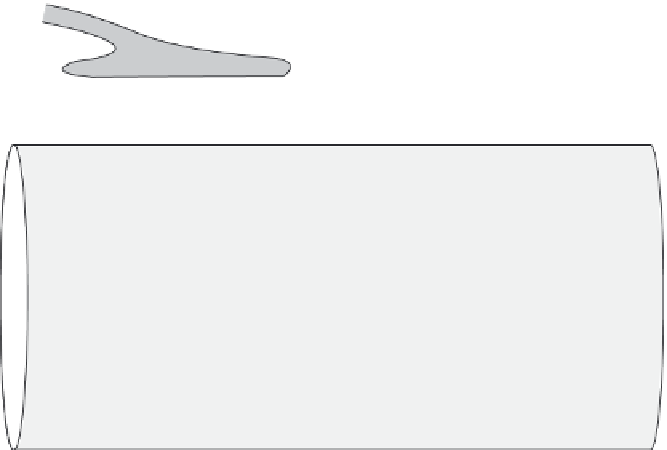Biology Reference
In-Depth Information
Neuregulin
Agrin
erbB
MuSK
AChR
p300
HDAC1
GABP
Ac
Ac
HDAC1
β β
β
β
α α
p300
α α
Synaptic genes
(AChR
ε
)
Figure 2.8
A model for synaptic gene regulation at the NMJ. Agrin and neuregulin
accumulate in the basal lamina of the synaptic cleft and activate their muscle receptors to
induce the local activation of intracellular signaling pathways, which in turn activate the TF
GABP. In addition, they induce histone hyperacetylation and hyperphosphoacetylation, which
participate in chromatin decondensation. The recruitment of p300 on synaptic genes by GABP
in subsynaptic nuclei favors chromatin hyperacetylation and decondensation. Conversely,
in extrasynaptic nuclei, GABP recruits the histone deacetylase HDCA1 on synaptic gene
promoters, thereby promoting chromatin compaction (
Ravel-Chapuis et al., 2007
).
In a generalized form, the neurohormonal induction of changes in epigenetic
structures (DNA methylation, histone acetylation) or the flow of epigenetic informa-
tion looks as follows:
External/internal stimuli→processing of the stimuli in neural circuits→secretion of spe-
cific hypothalamic-releasing hormones→secretion of specific pituitary stimulating
hormones→secretion of specific hormones by target endocrine glands→changes in specific
epigenetic structures (DNA methylation and histone acetylation).
It is obvious from this simplified signal cascade that the epigenetic information necessary
for inducing changes at specific sites of DNA and histones is generated in the CNS by pro-
cessing of external and internal stimuli.
Alternative Splicing
Alternative splicing is an epigenetic mechanism of eukaryotes that utilizes the
genome to generate protein forms that are not possible through genetic mechanisms.
In plants and animals, more than 30% of genes are alternatively spliced (
Xiong et al.,































































Search WWH ::

Custom Search